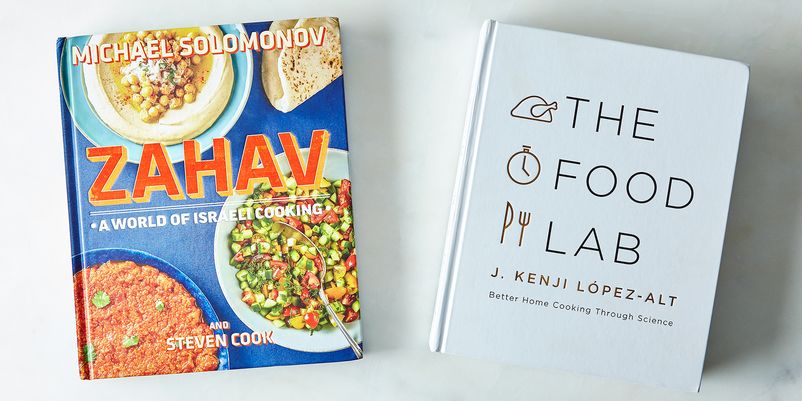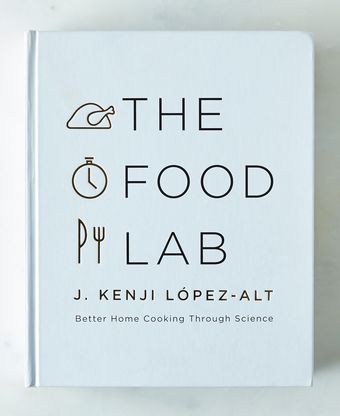To J. Kenji López-Alt and Michael Solomonov:
I love cookbooks. I have stacks of them in my kitchen, my hallway, next to my bed. They are towering columns of comfort. They bring color and light to each room. I flip through them for inspiration. I’m writing one. But unless I’m making pastries, I don’t follow recipes. And my kids don’t either: For thirteen years, I have been teaching them the importance of playing in the kitchen. Tweaking, adjusting, rejiggering. Listening to their guts.
Then The Piglet came along.
My daughter thought it was unfair to compare your books. They’re too different, mom. It’s just not right.
I couldn’t agree more. Cerebral, meticulous, scientific treatise on sous vide cooking and burgers and sticky buns versus Israeli food?
And then I went into a tailspin trying to define what makes a good cookbook.
My kids weren’t very helpful. That’s easy, said my son, a good cookbook has photos that make you want to lick the pages. He puts Aleppo pepper on everything and eats pickles for breakfast while my daughter is all about mug cakes and freakshakes. So, of course, from my daughter: Mom, a good cookbook has a nice balance of everything. Especially desserts.
Unlike novels and memoirs, cookbooks are often judged by their looks. Here’s what I might have said about these two at first glance:
The Food Lab has a serene and inviting cover. Almost 1000 pages. Your head will spin. You will need a martini. Or a sherpa. So. Many. Words. So much exciting science to dive into. So many awkwardly composed and poorly-lit photos screaming out for some natural light.
Zahav is 373 pages of Israeli home cooking inspired by Michael Solomonov’s Philadelphia restaurant of the same name. It is filled with stories of tragedy and triumph and reconnecting with his Israeli heritage. It’s uncomfortably styled. Overly lit. Looks a bit nineties.
But how could I possibly know if your books were good unless I cooked from them? Would I forgive some of these foibles? Or would they become more glaring?
We put colorful Post-its next to every single recipe we wanted to make.
I was very strict.
I didn’t let my son put Sriracha in your Caesar dressing, López-Alt. And Solomonov, no Nutella in your babka, even though we wanted to.
No improvisation allowed.
I am proud to say that my kids and I managed to cook over 20 recipes from each of your books.
Before I continue, I would like to lodge a formal complaint against you, J. Kenji López-Alt, for the overuse of the following words: AWESOME, ULTIMATE, BEST, PERFECT, FOOLPROOF, EASY.
But here is why I forgive you:
You taught me how to spatchcock a chicken.
You explained why my scrambled eggs weep. I now add salt to the eggs 15 minutes before I cook them.
You got me to throw three generations of egg-poaching technique out the window. We no longer add salt and vinegar to the boiling water and create a whirlpool with a butter knife. We now strain the loose whites away and slide the egg into the boiling water. No stray tentacles of whites. No murky acidic water. Just a tight white exterior hugging a just-firmed yolk.
You introduced us to light and fluffy buttermilk pancakes, immersion blender mayonnaise, Peruvian-style jalapeño sauce, steak with red wine pan sauce (that my son is still talking about), 3-ingredient blue cheese dressing, cheesy Hasselback potato gratin, sticky buns (six batches, bitches).
Just yesterday, I was slicing cheese and buttering bread and my son said, Stop, I hope you’re doing that the Food Lab way. Because, thanks to you, regular old grilled cheese just won’t do. They now want melted cheddar inside and crunchy Parmesan outside.
Thank you for explaining everything to me. Wait. Except for one thing: Why did the sickly sweet orange cream cheese glaze for your sticky buns keep splitting?
Solomonov: Your first chapter in Zahav, “Tehina: The Secret Sauce,” should win a James Beard award. I got so caught up in your magic that I overnighted two jars of Soom, your favorite tehina, from Amazon. I wanted to make amba tehina, harissa tehina, black garlic tehina.
And, dude, I will never buy hummus again. I will always do as you do. I will pulverize a head of garlic with lemon juice, pass it through a fine strainer, and slowly whisk in tehina, water, salt, and cumin until it resembles a shiny pourable icing and tastes like a savory, nutty mousse. I will store this gloriousness in my fridge and mix it with puréed chickpeas for hummus, eggplant for babaganoush. I will use it as a salad dressing base. I will place it on top, under, around, and in between meat and vegetables.
My friend Margi offered to help me test recipes. She took one look at The Food Lab and said: I don’t even know what I would do with this. But Zahav inspired her to host a Middle Eastern feast. Her main dish was your pargiyot (baby chicken) three ways with harissa, amba, and onion marinades. She and I agreed that on the page, they all looked and sounded quite different, but once grilled—while delicious—they all looked a similar greenish-orange and tasted virtually the same.
I made your chocolate babka. Such a solid recipe all the way through to the end. And so fun for the kids. But I think it needs more salt. Maybe some brown butter?
We need to talk about the fried eggplant with tehina and pomegranate seeds: The recipe said to cook the ¾-inch rounds in ½-inch of shimmering oil, five minutes per side. I’ve never experienced slices of eggplant cooking in ten minutes and, sadly, by the time they were creamy and soft inside, they tasted like oily hockey pucks. They went out with the compost.
But thank you for your beautiful tehina cookies. I kept several batches in my freezer and ate them all while binge-watching the second season of Transparent. Did you know they’re even better with vanilla, a bit of salt, and rolled in sugar? And it helps to slightly undercook them. And you should try them with hazelnut butter. See? I tweak.
I make a lamb pie with about 20 ingredients in the filling, so I was psyched for the simplicity of your beef pie. I loved adding that field of sesame seeds to the top that sinks down into the buttery pastry. But it was missing excitement (maybe 15 ingredients?).
Until a month ago, if you’d looked in the back of my fridge, you would have found a jar of your pickled persimmons and dates with dried limes. Texture: mealy. Flavor: medicinal. I couldn’t even give them away.
I really thought your book would win. Zahav is more my kind of food: Hella flavor. Nothing precious. My biggest criticism is that there is too much emphasis on your personal journey and not enough attention given to the recipes. People have raved to me about your restaurant. What got lost in translation? What didn’t get onto the page? Why do too many of your dishes fall flat?
There are some shots of you eating at home with your family. These are the meals that intrigue me. These are the stories I want to hear. The foods I want to taste. I want to sit at that table; I wish more of the book felt this way. But I’m not giving your cookbook away. This month, I’m going to make your shakshouka, Turkish coffee ice cream, twice-cooked eggplant, fluke crudo, coffee-braised brisket, lachuch, and borekas.
López-Alt, your book is as intimidating as shit. It is oddly structured and filled with so many details that often it’s hard to find the gems. But part of the joy I got from this book was discovering something new every time I flipped it open; and it was only because of the Piglet that I forced myself to excavate. I would like to thank you from the bottom of my heart for testing the fuck out of these recipes. I have never seen anything like it.



110 Comments
so sorry i didn't see these questions. i would recommend freezing the dough. but i froze them already baked and they were great too.
This is an extraordinarily brilliant review--as brilliant as these two writers deserve. I have both books--love both of them--and would have had a real problem judging them against each other. Brava Phyllis.